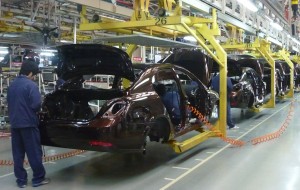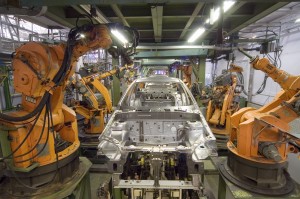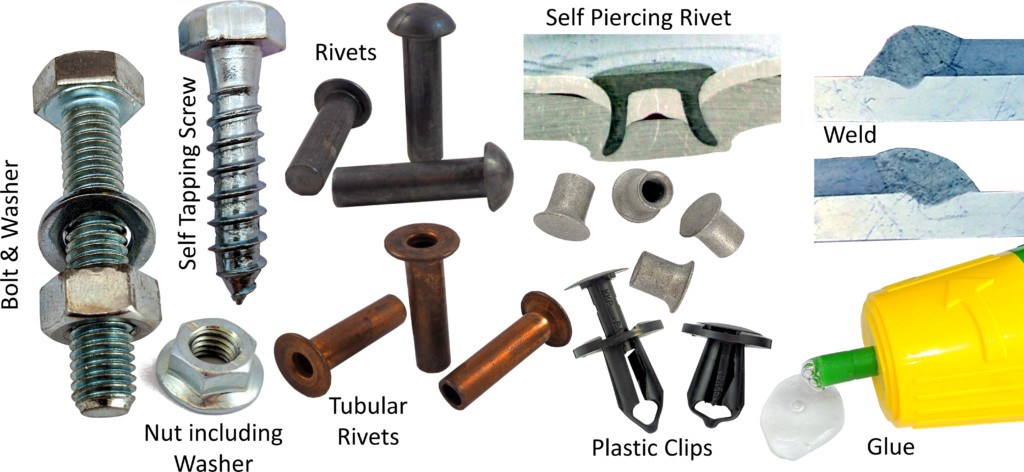 In my last posts I discussed basics and workshop preparation for design for manufacturing and assembly (DFMA), as well as the questions for design for manufacturing (DFM). The juiciest part, however, is the options for design for assembly (DFA). This post starts with the specific questions to ask for design for assembly. However, there are so many options that I won’t be able to fit them into one blog post, and this will continue in subsequent posts. Anyway, let me show you how to do design for assembly.
In my last posts I discussed basics and workshop preparation for design for manufacturing and assembly (DFMA), as well as the questions for design for manufacturing (DFM). The juiciest part, however, is the options for design for assembly (DFA). This post starts with the specific questions to ask for design for assembly. However, there are so many options that I won’t be able to fit them into one blog post, and this will continue in subsequent posts. Anyway, let me show you how to do design for assembly.
Design for Assembly
 While design for manufacturing looks at the cost of making a part, design for assembly looks at the cost of joining parts together. These two approaches have a lot of overlap, and should be looked at together to achieve an overall cost improvement. Nevertheless, I will discuss them here separately for didactic reasons.
While design for manufacturing looks at the cost of making a part, design for assembly looks at the cost of joining parts together. These two approaches have a lot of overlap, and should be looked at together to achieve an overall cost improvement. Nevertheless, I will discuss them here separately for didactic reasons.
Can You Reduce the Number and Complexity of Fasteners?
Particular attention should be given to any kind of fasteners like screws, clips, nuts, spacers, or washers. They are often good candidates for either simplification or removal. This overlaps partially with subsequent questions, but since fasteners are such a juicy topic for optimization, I have them here separately. Hence you should go through your bill of materials and look at all fasteners. You may skip glues and lubricants. There are products out there where over one-third of the bill of materials are fasteners. While an individual fastener may be quite cheap, the number of all fasteners may make this the most expensive group of a product. These have a lot of potential for improvement.
For all fasteners, try to go toward a simpler or easier-to-use design. In general, screws are the most expensive solution. You may reduce some effort by using nuts that include washers, or by using self tapping screws. Rivets are usually cheaper than screws, with tubular rivets or self-piercing rivets being even cheaper. Nails may be an option, as would be a pin to secure something or a wedge to hold it in place. Gluing, welding, or soldering is often even cheaper than rivets. Joining by forming may also be possible, where you simply bend a nub to secure the part in place. There are thousands of different techniques out there if you want to attach part to each other. The challenge is finding out which one is the cheapest for you.
 Plastic parts especially are often designed to snap into each other. These snap joints make assembly a breeze (although disassembly is often a bit trickier). However, it is quite possible to design such snap joints also for disassembly. Due to their large cost advantage, this type of connection is very common in plastic products.
Plastic parts especially are often designed to snap into each other. These snap joints make assembly a breeze (although disassembly is often a bit trickier). However, it is quite possible to design such snap joints also for disassembly. Due to their large cost advantage, this type of connection is very common in plastic products.
Can You Reduce the Number of Parts?
Another key question to ask is if you can reduce the number of parts (other than fasteners, which we already looked at). You should go though the list of all parts in your bill of materials, and check every one to see if it is needed. The less parts you have, the less assembly you have to do. Beyond that, this also means less part variants and therefore less inventory, less logistics effort, less chances of running out of stock, and a whole lot of side benefits.
Fundamentally, there are two ways to eliminate a part from your design. You can either remove the part completely, or you can merge two parts into one part. In the latter case, the manufacturing cost of the single part may go up, but the manufacturing cost for two parts in total may go down. You will have additional savings in assembly and logistics.
There is actually a whole logic tree to determine if parts have to be separate. This is based on three primary aspects: Is there movement of the part relative to other parts? Parts that have movement relative to the other parts usually need to be separate parts. In a second step you may ask if this movement is actually necessary or if it can be avoided. You can also ask if the movement or the function in general is also possible without this part.
If there is no requirement for movement, then another consideration is if the part is made from a different material. If the part is indeed a different material, it is necessary to find out why it is different. Often, different materials have a functional requirement behind them. For example, it may be needed to isolate electricity or heat from other parts. It may also be simply for aesthetics or optics. Nevertheless, you can check if this functionality would also be possible with the same material.
Finally, if the part is the same material and not moving, you may determine if it needs to be removable for maintenance or also adjustable. It may be helpful to have a separate part to make repairs easier. A related example would be car headlights, where for some cars you have to exchange the entire headlight unit just because a bulb or a LED burned out. If the part is removable for maintenance, check if this is truly necessary. Also check if you can achieve maintenance or adjustment without a separate part.
If none of the above reasons require movement, different materials, or maintenance, you may consider removing the part. An overview of this decision tree is shown below.
There may be a few more exotic reasons to keep part separate. If so, the design team will surely know. Anyway, every part you remove omits one step from the assembly location, and also eases the load on the supply chain.
This reduction of the number of parts is often a big potential in design for assembly. However, there is more. A lot more, in fact. I have two more posts only on design for assembly coming up. In my next post we will look at reducing the number of part variants. Now, go out, reduce your part count, and organize your industry!




Hi! Shouldn’t the right column have the yes and no flipped?
If I can say: Movement possible without part > Yes > Remove part. Above it is labeled as no.
Hi Florian, you are absolutely right. My mistake! I changed the image. Actually, I updated the question, so the “yes” and “no” stay the same, but the question now fits. Thanks for pointing out my mistake! (If you still see the old image, it may take a bit until the cache updates.